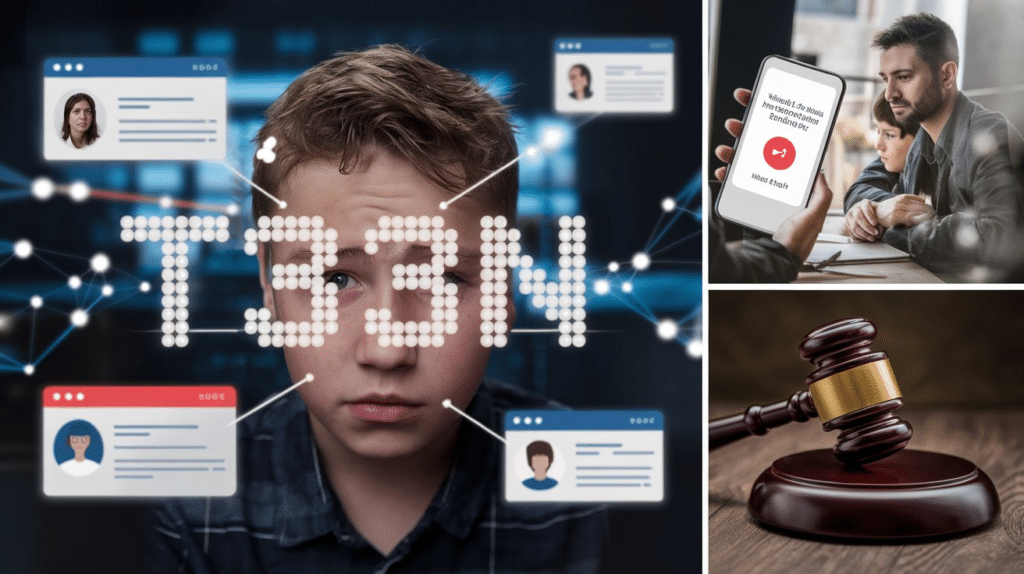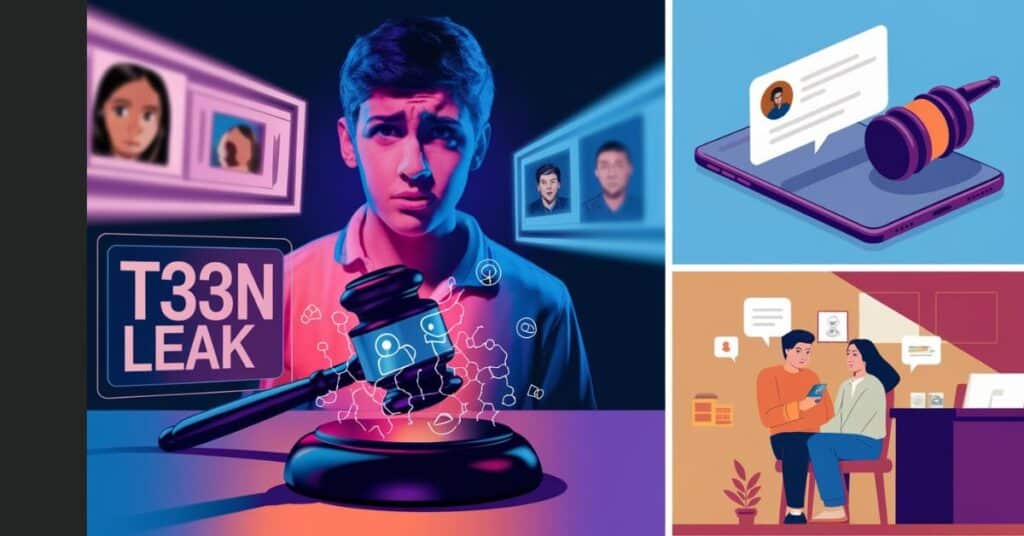In today digital age, where social media and online communities dominate the lives of teenagers, the phenomenon known as the T33n Leak has raised widespread concern. This unauthorized sharing of private information, often without consent, brings up significant questions about online privacy, personal information, and the ethics of online behavior. As tech-savvy teens navigate this digital landscape, they face challenges that previous generations couldn’t imagine.
This article explores what the T33n Leak entails, its origins, consequences, and proactive steps that teens, parents, and society can take to prevent it. Let’s dive into this pressing issue and learn how to protect youth privacy in an increasingly digital world.
What is the T33n Leak?
The T33n Leak refers to the unauthorized dissemination of private information or images of teenagers, typically without their consent. This could include everything from photos shared on social media platforms to sensitive content exposed through hacking or other digital breaches.
Common channels for T33n Leaks include:
- Social Media Platforms: Images and videos shared by teens can be reposted without permission.
- Messaging Apps: Private conversations can be screenshotted or forwarded.
- Hacking Incidents: Accounts can be hacked, leading to unauthorized sharing of content.
Example: A recent incident involved a teen private photos being leaked on an online forum, causing the individual significant emotional distress and social consequences.
The implications of these leaks are profound, impacting a teenager social standing, mental health, and future opportunities. As the internet expands, so does the need for digital protection.

Origins of the T33n Leak Phenomenon
The T33n Leak is a byproduct of today’s tech-savvy youth culture, which heavily relies on social networking and digital platforms to interact with friends and peers. With teens frequently posting on social media and using messaging apps, the risk of accidental or malicious leaks has surged.
Contributing Factors:
- Increased Digital Sharing: Teens often share daily moments online without fully considering potential consequences.
- Cyberbullying and Peer Pressure: Teens may feel pressured into sharing private details or images, only to regret it later.
- Lack of Digital Awareness: Many young people are unaware of how quickly information can spread or be misused.
According to recent studies, over 85% of teens have some form of social media presence, making them susceptible to internet challenges unique to this digital era.
Consequences of a T33n Leak
The effects of a T33n Leak can be devastating and have long-lasting consequences.
Impact on Mental Health
- Emotional Distress: Teenagers often experience anxiety, shame, and isolation when personal details are leaked.
- Depression and Trust Issues: Feeling betrayed or violated can have lasting psychological impacts.
Legal and Social Ramifications
- Legal Consequences: Depending on the content, those responsible for leaks could face civil or even criminal penalties.
- Reputation and Social Standing: Affected individuals may suffer damage to their public image, leading to exclusion from social groups or lost opportunities.
Quote from Digital Privacy Expert: T33n Leaks are not just about the loss of privacy. They can lead to lifelong issues with self-esteem and trust, especially for those most vulnerable.
How Teenagers Can Protect Themselves from T33n Leaks
Digital literacy and proactive online behavior are essential in preventing T33n Leaks. Here are some practical steps teens can take to safeguard their online privacy and personal information:

- Be Cautious with Sharing: Avoid posting sensitive content that could be misused.
- Utilize Privacy Settings: Adjust settings on social media to limit who can see personal information.
- Secure Accounts with Strong Passwords: Using unique, complex passwords and enabling two-factor authentication helps protect accounts from unauthorized access.
- Think Before You Post: Always consider the potential for content to spread beyond the intended audience.
A 2023 survey by Internet Safety Foundation found that 72% of teenagers who regularly adjusted their privacy settings felt more secure online.
Parental Role in Preventing T33n Leaks
Parents play a crucial role in guiding teenagers through the internet environment. By fostering open communication and educating teens on online safety, parents can help mitigate the risks of T33n Leaks.
How Parents Can Help
- Discuss Online Privacy: Have conversations about the importance of protecting confidential data.
- Encourage Responsible Use of Technology: Emphasize the importance of caution when interacting online.
- Stay Informed About Social Media: Keep up with trends to better understand potential risks.
Tip for Parents: Try to monitor your child’s online presence without being intrusive. This helps maintain trust while ensuring safety.
Legal Implications of T33n Leaks
The unauthorized sharing of private content can have severe legal implications. Many countries have updated laws to combat cyberbullying and online harassment specifically targeting minors.
Possible Legal Consequences
- Civil Suits: Victims may pursue damages for emotional distress or loss of reputation.
- Criminal Charges: In severe cases, the offender could face fines or imprisonment.
Knowing the laws can empower victims and deter potential offenders, emphasizing the importance of respecting digital privacy in the online sphere.
Resources and Support for Victims of T33n Leaks
Several resources are available for teens who have experienced T33n Leaks. These organizations offer guidance, emotional support, and sometimes legal aid.
| Resource Type | Examples |
| Counseling | Teen Help Hotlines, Mental Health Services |
| Online Communities | Digital Support Forums, Peer Support Groups |
| Legal Assistance | Pro Bono Lawyers, Privacy Law Specialists |
If you or someone you know is a victim of a T33n Leak, consider reaching out to one of these resources.
Society Role in Addressing the T33n Leak Issue
Addressing T33n Leaks requires collective effort from parents, educators, tech companies, and policymakers.

Suggested Initiatives
- Implement Digital Literacy Programs: Schools can educate students on digital security and privacy.
- Promote Awareness Campaigns: Raise awareness about the risks and responsibilities of online behavior.
- Strengthen Social Media Protections: Platforms can improve security configurations and reporting tools for underage users.
The digital world is constantly evolving, and society must adapt to protect vulnerable individuals from these privacy risks.
FAQs
What exactly is a T33n Leak?
T33n Leak refers to the unauthorized sharing of private data or images of teenagers.
How can I protect my personal information online?
Use privacy settings, secure passwords, and avoid oversharing on public platforms.
What should I do if I’m a victim of a T33n Leak?
Seek support from counseling services, inform trusted adults, and consider legal action if necessary.
How can parents help protect their teens online?
Openly discuss online privacy, encourage responsible use, and stay informed about digital trends.
Conclusion: The Future of T33n Leaks
Understanding and addressing the T33n Leak phenomenon goes beyond awareness; it’s about equipping teenagers with the skills and knowledge to navigate the digital realm safely. As society becomes more digital, fostering an environment of online privacy and cybersecurity is essential for future generations.
Protect the youth in your life – learn more about how to safeguard their online presence today.

Adim Smith is an experienced blogger at Match Starz, sharing in-depth insights on celebrities and athletes. With a passion for storytelling, he brings readers closer to the lives and achievements of today’s biggest stars.







